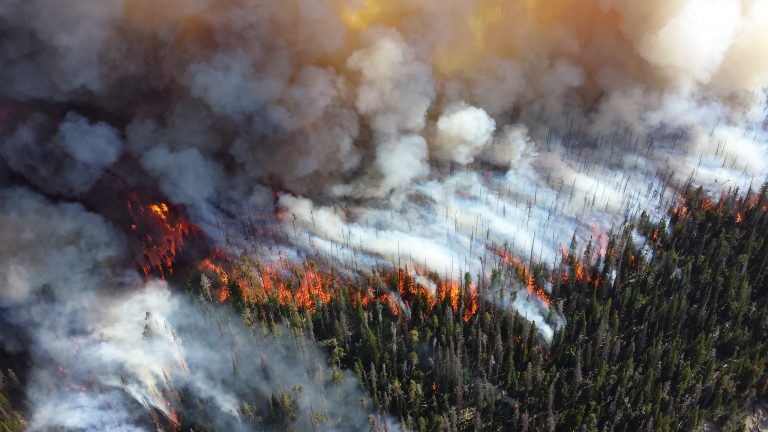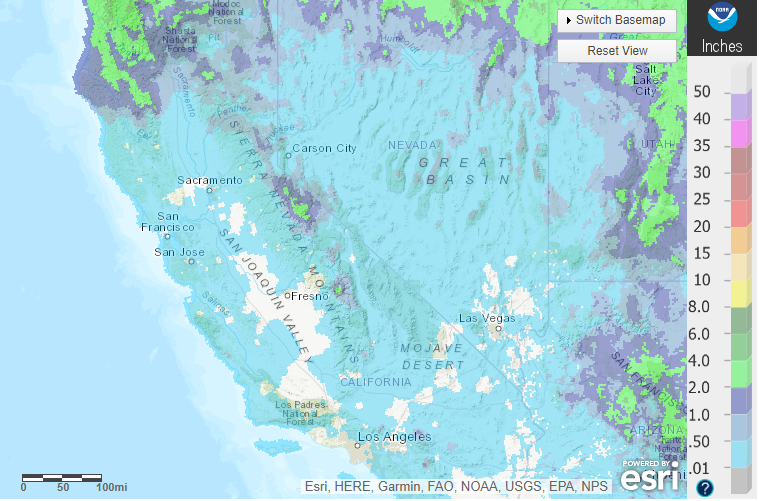Blistering Heat and Drought Spark Roaring Wildfires in the Western U.S.

Extremely hot, dry conditions have combined with a rash of dry lightning storms to produce raging wildfires across large swaths of central and northern California. These fires have consumed hundreds of thousands of acres and many homes and businesses. Mandatory evacuations have emptied numerous communities.
UPDATE: Yesterday evening @NOAA‘s #GOES17 watched as smoke continued to billow from the #CaliforniaWildfires. Many of the #fires grew rapidly overnight, and @CAL_FIRE has issued evacuation warnings for more communities. #CAwx #wildfires pic.twitter.com/mMnV0elvnu
— NOAA Satellites – Public Affairs (@NOAASatellitePA) August 21, 2020

Little to no rainfall has fallen in the past three months across the region (see map above). This in and of itself is not out of the ordinary, but the extreme heat is. Most of the Desert Southwest up into the Sacramento Valley is running 4-5 deg above climatological averages in July and August. In fact July 2020 was the hottest month on record in Phoenix, Arizona with an average temperature of 99 degrees F (37 deg C). That average includes both daytime and nighttime readings! In fact, lows stayed above 90 deg F (32 deg C) for more than half the month in Phoenix, another record. Not to be outdone, the Furnace Creek Visitor Center in Death Valley recorded a scorching 130 deg F (54.4 deg C) on Sunday afternoon. Once confirmed, it will be the hottest temperature there in more than a century, and the third-highest ever recorded on Earth!
What little precipitation has occurred has come in the form of isolated pop-up thunderstorms. They produce little in the way of rainfall but do contribute fire-sparking lightning activity. Some of the fire complexes have grown so large and hot they’ve created their own weather. These “pyrocumulonimbus” clouds behave like any other severe cell, tapping into upper atmospheric spin to produce hellish fire tornadoes on the ground (see tweet videos above). Unsurprisingly, air quality has been very poor across much of the region due to the smoke and ash. These conditions would be unhealthy enough on their own, but combined with the ongoing COVID pandemic, there is an extreme danger posed to the elderly and those with chronic respiratory conditions. Lead photo courtesy Mike Lewelling, National Park Service.
